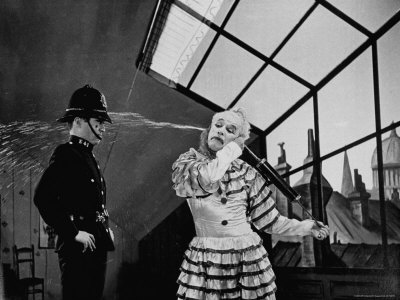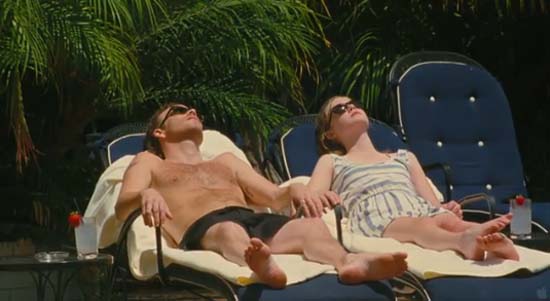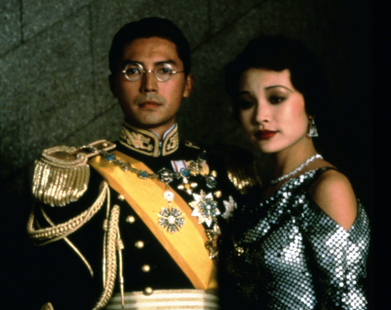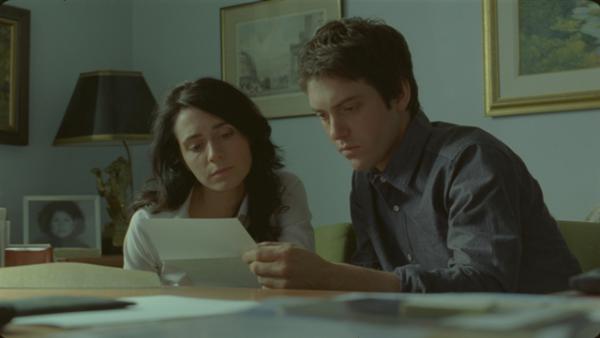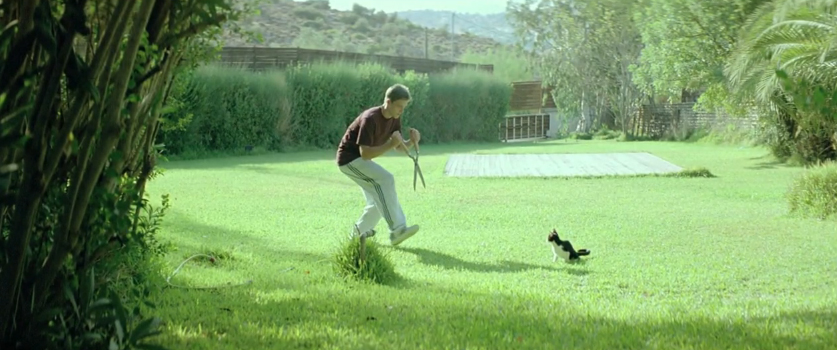*** (A Must-See)

So Enter The Void starts off in Tokyo following this low-level drug-dealer Oscar (Nathaniel Brown) as he is on his way to this bar The Void to give his friend Victor (Olly Alexander) the MDMA he owes him. Before he leaves, he is in his apartment. Across the street from his room, there is this bar called Enter (a beginning similar to most video-games start button), and Oscar’s sister Linda (Paz de la Huerta) is there and after she accuses him of being a drug addict and leaves, Oscar gets stoned, closes his eyes, and there is a drug-induced diversion of pure sight, color, shapes, and sound. His friend Alex (Cyril Roy), a neo-abstract-expressionist painter, joins him and they talk about The Tibetan Book of the Dead, and how some spirits are left adrift after their physical bodies die prematurely, waiting to be reincarnated. In a characteristic long-take, all the characters background and motivations are partly addressed. At the bar, there is a police bust and Oscar gets shot in the stomach as he is in single-unit washroom throwing the pills down a grimy toilet bowl. His spirit, which the premonition of the mystical book purports will float around after death, arises. Through multiple flashbacks Oscar recounts Linda’s and his personal background from their traumatic childhood (their parents were killed in a car crash as they sat in the back-seat and watched) where they were separated to different foster homes, even though they promised to each other, in their own blood from their index finger, that they would always be there for each other. Oscar, with his friend Victor, starts to earn a lot of money dealing drugs. He says that this guy Gaspar referred him to his drug dealer (and the director himself has a cameo as one of his customers in a club). With his extra dough he flies his sister to join him in Tokyo (as Oscar sees a plane from a window he wonders how it would be like to see the city from that perspective, which he would come to do). There is something incestuous about the two siblings Oscar and Linda as when she arrives and they are on a double-decker bus touring the city she kisses his neck and licks his ear, there is this sexual tension between them, and there is also this Freudian Oedipus complex going on, as in a flashback Oscar watches his parents have sex, and in a scene where he’s fucking his friend Victor’s milf, it cuts to shots of his own mother, and ends with a shot of himself as a baby embraced in his mothers arms. In Tokyo, Linda gets involved with the owner of the strip club Sex Money Power, starts to dance there, gets fucked, then pregnant, and then aborts the fetus. As Oscar’s spirit flies around this acid-neon green and magenta Tokyo (or maquette of Tokyo; one recalls the train-crash in The Greatest Show on Earth), with seamless transitions from one room, or building to the next, that gives the impression of a long-take. A similar feat achieved in Alfred Hitchcock’s Rope. There are also great use of the fish-eye lens, and like Philipe Grandieux, Gaspar’s filming techniques are not only psychological but cinematic as you are not only perceive what the character are going through, you feel it. There is also a focus on circular objects with an air of mysticism; similar to the round black-pipe that sucks up mist in Joe’s Syndromes of a Century, both which owe a lot to the visually magnetic black monolith in 2001: A Space Odyssey (It is a good coincidence they are both playing at the Lightbox simultaneously). Finally, Oscar arrives at the infamous Love Hotel, Gaspar’s attempt at Kubricks’ Eyes Wide Shut’s orgy. Linda and Alex arrive to the hotel, where that little shit Victor is already giving some guy head, and then the two have sex, and then the spirit of Oscar enters into Linda’s vagina (!) as Alex’s cock thrust inwards and then with the semen as it fertilizes Linda’s egg. Oscar is reincarnated as Linda and Victor’s child.

In Jonathan Rosenbaum’s review of Irreversible he gave the film only one-star (i.e. has redeeming facets) and in the review he contrasts the film with Costa-Gavras’ Amen. that he preferred. His concerns are ethics; what for a filmmaker is ethically useful and ethically permissible to show? One reason JR prefers the latter is purely for its informative value “Amen. is worth seeing for its lucidity and for the historical information it imparts.” while “Irreversible is so formally and stylistically aggressive that this aspect overpowers what it has to say, which isn’t much.” Though JR considers I Stand Alone “a masterpiece because of what it suggests about the xenophobia and panic of some of the French people who voted for Jean-Marie Le Pen, and because it forces me to share some of their anguish and understand some of their rage.” JR uses these two films to mediate his own taste, and characteristically never one-sided, he brings up opposing views from Noah Cowan, from the 2002 summer issue of Cinema Scope, and an email correspondence with the German film critic Olaf Moller. JR who has consistently dealt with the relationship between history and film, champions Amen. over Irreversible to highlight the importance of remembering the Holocaust, as well, social criticism on the United States “where indifference to atrocities is arguably a more pressing issue.”
In James Quandt’s 2004 ArtForum essay Flesh & blood: sex and violence in recent French Cinema” (which Wikipedia truncates in their overview) he labels the trend of “the growing vogue for shock tactics in French cinema over the past decade” as the New French Extremity. The willfully transgressive directors, he highlights, are Francois Ozon, Claire Denis, Patrice Chereau, Bertrand Bonello, Marina de Van, Gaspar Noe, Catherine Breillat, Virginie Despentes and Coralie Trinh Thi, Philippe Grandrieux, and Bruno Dumont. All right, how do these directors fit into the New French Extremity mold seven-years after the original essay? Are they all so violent and sex obsessed? First off, Francois Ozon, who James refers to as “an ourider of French extremity”, new movie, is Potiche, a Deneuve-Depardieu-Luchini vehicle that looks very funny, it’s a comedy (I love Ozon by the way). Claire Denis’ two latest films are an Ozu-like family drama 35 Shots of Rum and an Isablle Huppert period film set in an African coffee plantation, White Material. Marina de Van, whose first film is Dans ma peau and who co-scripted and starred in Ozon’s See the Sea, new film Ne te retourne pas, stars Sophie Marceau and Monica Bellucci, as the same woman, who is trying to write an autobiographical memoir of her childhood that she can no longer remember, the two women as young girls (played by children actresses) were together in a car crash (these filmmakers are fascinated with car crashes; see the repetition of the car crash in Enter the Void) and the former took on the identity of the latter. Now they sit beside each other smiling as they busily type away. What truly separates de Van from Noé is how her characters easily fall in the mold of the articulate and cultured, while Noé reacts to this cerebral tendency in French cinema that focuses on linguistic expressiveness. His characters owe more to the kids in those Larry Clark movies, which the Cinematheque Francaise just had a retrospective with the musée d’Art Moderne de la Ville de Paris (Serge Toubiana mentioned to me that screenings were very successful). One of the articles subject is also a speculation of the place of Robert Bresson (a director who James Quandt edited a monograph for the Cinematheque Ontario) in contemporary French cinema (I mentioned to James after a screening of Godard’s Film Socialisme if he noticed the Balthazar donkey in the film, he did), he posits that at a time some people viewed Bruno Dumont as the true heir to Bresson. Catherine Breillat’s 2007 film Une Vieille Maitresse (the prolific director made three movies in the last three years), shot by renowned cinematographer Yorgos Arvanitis, is a classical film in style with long- and medium-shots, slight camera movements, heavy themes, and a look that seems meticulously pre-planned. Philippe Grandrieux has been gaining momentum for pushing narrative full-length features closer to the realm of experimental cinema. In the 1990s Cahiers du Cinema championed his films, in 2005 Nicole Brenez, from the experimental and avant-garde film programme at the Cinematheque Francaise, edited the book La Vie Nouvelle/nouvelle vison: a propos un film de Philippe Grandrieux, and with his new feature Un Lac, 2008, he has been gaining more international press, the November/December 2010 issue of Film Comment has a good article on him by Haden Guest, from the Harvard Film Archive. I would add Jacques Audiard as a new participant in the New French Extreme as A Prophet definitively has its extreme violent moments like the razor-blade neck slashing. Also what is interesting of James’ essay is how it makes it appear as if all the filmmaker’s content and style are reverberating off of one another.

What makes Gaspar such an outlier, even within this group, is how now he is no longer even making French movies, Enter the Void, is set in Tokyo and it is an English-language film, and like the butcher (Philippe Nahon) from Carne, I Stand Alone, and Irreversible, who proclaims he wants to make a porno, Gaspar, in an interview with Bruce LaBruce for Bad Day magazine, says “Yeah I’m planning to do an arty porn, but I’m talking about [wanting to make] real porn” and “I just want to do a movie like normal life where people have sex. Have you ever seen a porn movie with feelings?” (I would answer, yes, Gilles Carle’s La tête de Normande St-Onge (a.k.a. Normande), 1975). Gaspar and his friends Bruce LaBruce and Harmony Korine, I will posit to be at the forefront of the radical trash movement, where the subject is usually trashy, dumb or odious and that they use that as a way to aggressively radicalize and stylize form to show you a world that has been unseen cinematically. It presents a new strand of filmmaking that can create moments of fascinating effect, like in Enter the Void there is the first person perspective, with eye-blinks and psychedelic shape-and-color shifting scenes, and a strobe-lighting black-and-white screen. Though there are some filmmakers that try to achieve this trashy playfulness and just fall flat, like Darren Aronofsky, whose new movie Black Swan is cheap and manipulative and its only redeeming facet is the performance by the great Vincent Cassel, the star of the chef-d'oeuvre Irreversible.

In the November 2010 (N.661) issue of Cahiers du Cinema, Demain Ils Feront le Cinema Francais, the editor Stephane Delorme talks about the new wave of young French filmmakers and uses the issue as a way to support not only what they are trying to change of the countries national output, a reaction to (my translation) “The chronology-scenario restrains the forces of cinema: the mise-en-scene submits to the imperatives of situations, the montage submits to the imperatives of fluidity, the story submits to linearity.”, but as a way, I assume, to help them with theatrical reception, distribution and funding. The filmmakers they highlight are Rebecca Zltotowoski (Belle Epine, which stars Lea Seydoux), Quentin Dupieux (Rubber), Ilan Kliper and Virgil Verrnier (Commissariat), Mikhael Hers (Memory Lane), Sophier Letourneur (La Vie au ranch), Riad Sattouf (Beaux Gosses), Djinn Carrenard (Donoma); and five directors of short-films (“On croit en eux”): Antonin Peretjatko, Arthur Harari, Philippe Parreno, Thomas Salvador, and Yann Gonzalez. I find this to be a brave feat, and unlike the whiny Nick James from Sight & Sound who is always complaining about funding for British cinema, I actually care what Stephane Delorme has to say because French cinema is actually interesting and the comments are not so repetitive that they become monotonous. My only problem with such uninhibited support is that it comes at the cost of denigrating the old-timers, in particular Bertrand Tavernier, like how in the same issue Nicolas Azalbert in his critique of La Princesse de Montpensier, he writes that the film (my translation) “resembles then a representational theater play interpreted by a bad company of clowns on a 17th century public stage.” Ouch! I much prefer Michel Ciment at Positif that champions the man, Bertrand Tavernier, who made some great films and wrote some important film-criticism, like the book 30 Years of American Cinema with Jean-Pierre Coursodon and Amis americans: entretiens avec les grand auters d’Hollywood. In the magazine there is also a good article by Serge Bozon, Le Cinema Francais est-il darwinien?, which it would be interesting to see where he places Gaspar Noe.
I like Enter the Void and, yeah, I think it is a good movie even though I can agree with its detractors that, yes, the movie seems too long. I hope this article conveys this as well as the context around Gaspar Noe in contemporary French cinema and his place within the realm of the radical trash. When Gaspar was asked if his movies were ever censored, he responded “Never to the point where the movie wouldn’t be shown, I guess I missed a point in my career because most good directors always have a movie banned.” Here he is being self-depreciative, so to make him happy, I hope his next movie does get banned.
David Davidson


